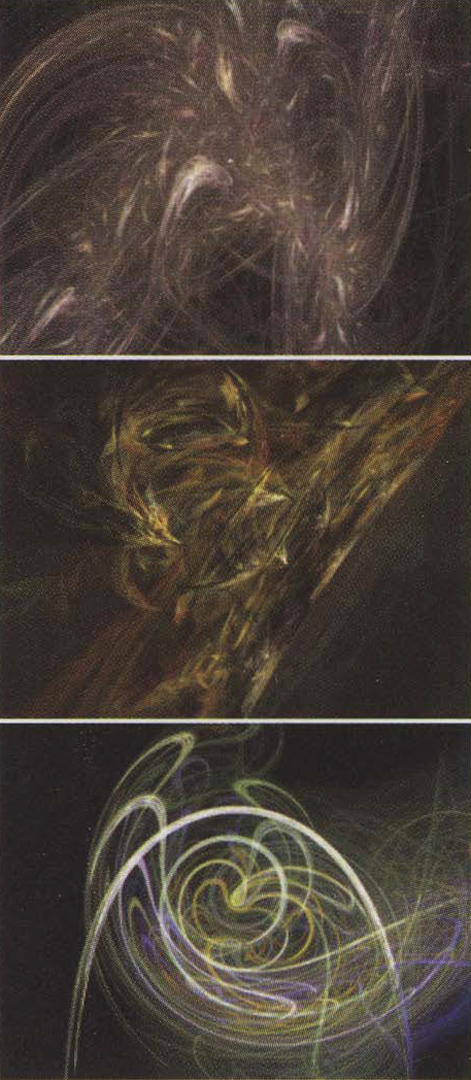Scott Draves: Electric Sheep
Artist(s):
Title:
- Electric Sheep
Exhibition:
Creation Year:
- 2004
Category:
Artist Statement:
I am a software artist schooled in computer science and mathematics, living in the San Francisco Bay Area. I produce visuals by writing software. The end products of my work include digital prints, video, interactive systems, and web sites. The software has emergent properties, exhibits artificial life, and is distributed with an opensource license. The graphics are abstract, sensuous, introspective, and emotive. The style is organic rather than geometric. My work consumes a large part of my life, and hence it has many dimensions and intentions. Primarily, it is simply to create beauty. It validates the premise of a-life: that beauty and life can spring from iteration of simple mechanical rules. You can get out more than what you put in. It validates the open-source model and repudiates the theory that artificial scarcity is necessary for art to have value. The intent of my work is to show that creation does not require control, and, in fact, giving up control is the primary creative act. Ultimately, I hope to participate in filling cyberspace with beauty and awareness: to imminetize the eschaton.
Technical Information:
Electric Sheep realizes the collective dream of sleeping computers from all over the internet. It’s a distributed screen saver that harnesses idle computers into a render farm with the purpose of animating and evolving artificial life forms. The project is an attention vortex. It illustrates the process by which the longer and closer one studies something, the more detail and structure appears. When the software is activated, the screen goes black, and an animated “sheep” appears. In parallel, the screen-saver client connects to a P2P network and joins the distributed computation of new
sheep. The screen saver is a window into a visual space shared among all users. Each sheep is about four seconds long and is the phenotype of an artificial organism, an “electric sheep.” The animations loop and dovetail with each other, forming a random graph. The client displays them one after another in a continuous, ever-changing sequence. The fitness function for their evolution is determined by the collective
voting of the thousands of users. Not only is the rendering shared, but so is the bandwidth load of distributing the animations. The gnutella P2P network is used for both the heavy lifting of MPEG sharing and for calculating the aesthetic selection function. Electric Sheep investigates the role of experiencers in creating the experience. If nobody ran the client, there would be nothing to see. The sheep system exhibits increasing returns on each of its levels.
As more clients join, more computational muscle becomes available, and the resolution of the graphics may be increased by making the sheep longer, larger, or sharper. The more people participate, the better the graphics look.
Likewise, as developers focus more of their attention on the source code, the client and server themselves become more efficient, grow new features, and are ported into new habitats. The project gains momentum and attracts more developers. And as more users vote for their favorite sheep, the evolutionary algorithm more quickly distills randomness into eye candy. I believe the free flow of code is an increasingly important social and artistic force. The proliferation of powerful computers with highbandwidth
network connections forms the substrate of an expanding
universe. The electric sheep and we, their shepherds, are colonizing this new frontier.





